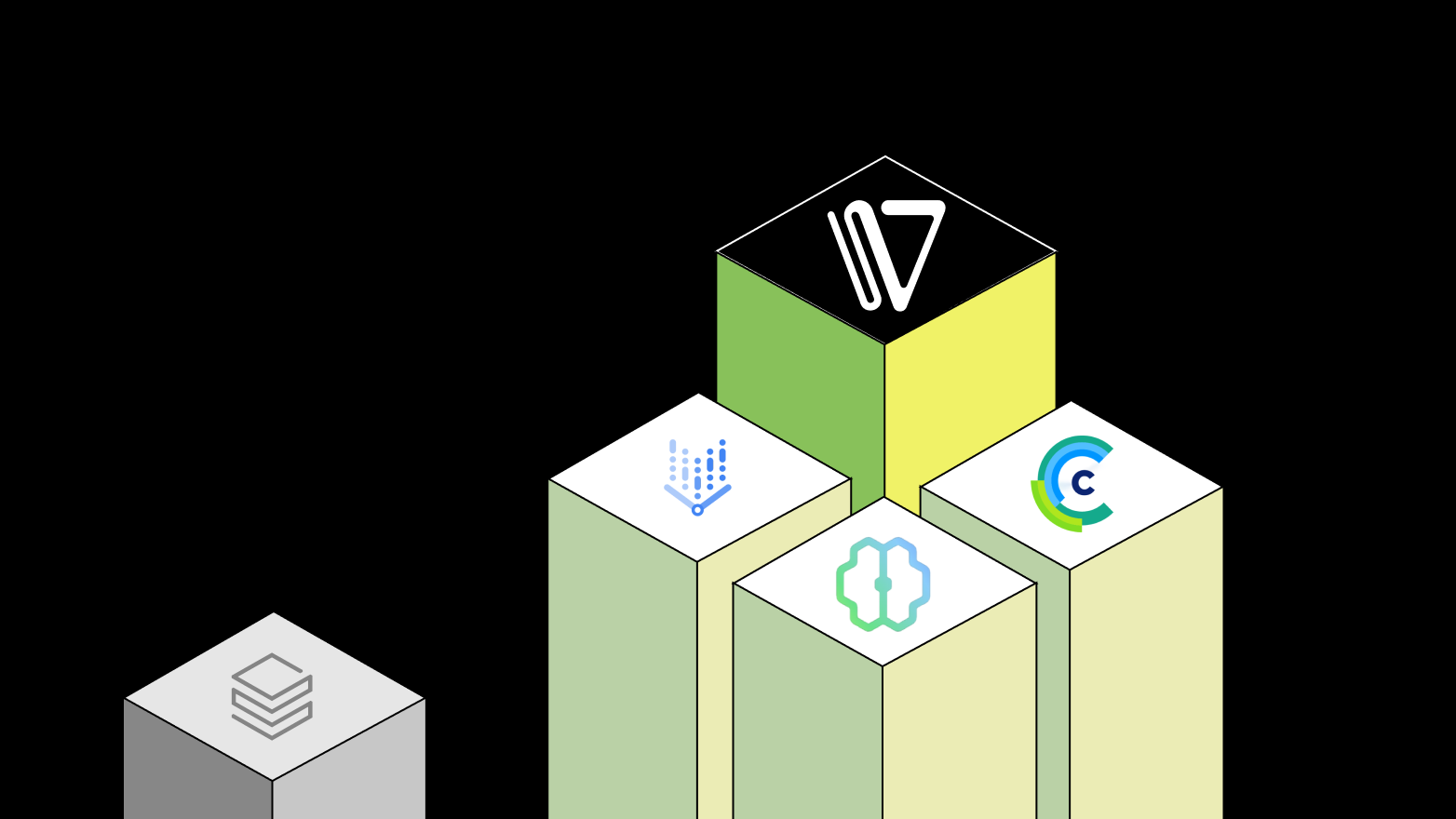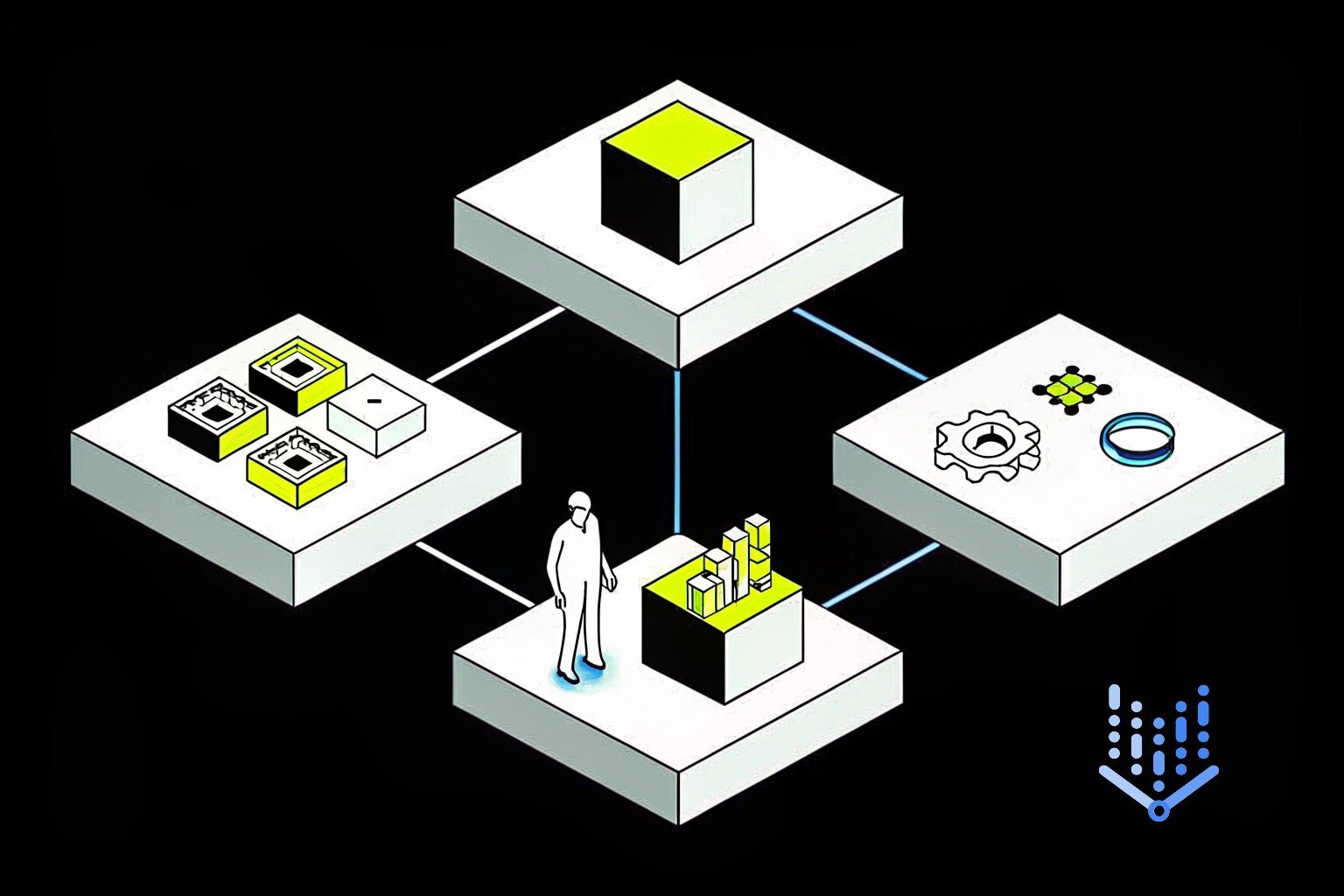6x MLOps Productivity: How Teams Do More With Less Using Cake
.png)
Enterprises running on Cake have seen up to a 6x increase in MLOps productivity. That's not marketing spin. It's a direct outcome of teams consolidating their MLOps on a platform that removes the heaviest lift: infrastructure.
Most AI projects do not stall because of models or data. They stall because MLOps is complex, labor-intensive, and fragmented across too many tools. Traditional approaches require large engineering teams to stand up infrastructure, keep it compliant, and maintain pipelines. Every new model or project adds more overhead, slowing velocity and driving up cost.
Cake changes that equation. By packaging together the open source components enterprises already want to use, with orchestration, compliance, monitoring, and cloud-agnostic deployment built in, Cake frees engineers from plumbing work. The result is that fewer engineers can deliver more projects, faster, with dramatically less friction.
Key takeaways
-
Enterprises using Cake have achieved up to 6x more MLOps productivity, enabling leaner teams to deliver greater impact.
-
Case studies from Ping and Glean.ai show how Cake reduces infrastructure overhead so engineers can focus on models and outcomes.
-
By consolidating infra, compliance, and orchestration, Cake helps organizations lower costs, launch more projects, and accelerate AI timelines.
Real-world proof: Ping and Glean.ai
At Ping, a data intelligence platform supporting the insurance industry, the challenge was clear: they needed to scale AI workloads faster than their team size could grow. Building and maintaining the MLOps stack internally would have stretched resources and slowed progress. With Cake, the existing team was able to expand its capacity without waiting on lengthy hiring cycles. “Our partnership with Cake has been a clear strategic choice – we’re achieving the impact of two to three technical hires with the equivalent investment of half an FTE,” explains Scott Stafford, Ping’s Chief Enterprise Architect. By removing the burden of building and maintaining infrastructure, Cake let the team focus on high-impact projects, effectively doubling their operational efficiency.
That productivity boost also translated directly into faster releases. “With Cake, we’re collecting this data several times faster than we were before, in a way that makes it easy to analyze what we’ve got, understand the provenance of annotations, and measure the performance of different annotators,” says Bill Granfield, Machine Learning Engineering Lead at Ping. “It has enabled us to release a new model much faster than we would have otherwise.”
"We’re achieving the impact of two to three technical hires with the equivalent investment of half an FTE"
—Scott Stafford, Chief Enterprise Architect, Ping
Glean.ai, an accounts payable platform, experienced a similar lift. The engineering team built a custom LLM stack in-house with Cake, a project that would traditionally demand dedicated infrastructure and DevOps specialists. Instead of growing the team, Cake allowed its existing engineers to handle the workload directly. “We were able to stand up a custom LLM stack in weeks, not months, without having to expand our team,” the Glean.ai team shared. By removing infrastructure hurdles, Cake gave them the speed and confidence to focus entirely on building their product, proving that even lean engineering groups can deliver enterprise-scale AI.
How Cake multiplies productivity
The productivity gains that Ping and Glean.ai experienced are not isolated successes. They are the result of how Cake is built to remove the hidden overhead that slows most AI teams. In traditional MLOps, engineers spend valuable time stitching together orchestration frameworks, configuring scaling policies, setting up monitoring tools, and navigating compliance requirements. On top of that, they need to keep up with a rapidly shifting open source landscape. Every one of these steps adds complexity and steals attention from the work that creates real value: training and deploying models.
Cake changes that dynamic. By delivering a unified, cloud-agnostic platform that already brings these components together, Cake eliminates the setup tax and the ongoing maintenance burden that weigh teams down. Engineers no longer need to operate like system administrators. Instead, they can focus entirely on building and releasing models. The result is more capacity, faster iteration, and greater impact from the same resources.
Pre-integrated infrastructure
Scaling, orchestration, and monitoring are available from day one. Instead of configuring Kubernetes clusters, connecting Argo workflows, or wiring Grafana dashboards, teams get a stack that is ready to use. This reduces setup time from weeks to hours and lets engineers move directly into experimentation and deployment.
Compliance built in
SOC 2 and HIPAA readiness are already part of the platform. Traditional teams often have to create compliance processes from scratch, pulling in legal, security, and governance specialists. With Cake, those controls are included and auditable, which removes weeks of extra effort and lowers the risk of costly mistakes later.
Cloud-agnostic and OSS-first
Cake integrates seamlessly with the most widely used open source components such as MLflow, Kubeflow, and Ray, and it can run on any cloud or VPC. Teams can continue to use the tools they know without having to migrate or conform to a vendor’s ecosystem. This flexibility prevents vendor lock-in and ensures that new projects can start quickly instead of waiting on long re-platforming efforts.
Focus preserved
By abstracting away infrastructure complexity, Cake keeps engineers working on models instead of maintenance. The team’s attention stays on tasks that create business value: experimenting with data, training models, and putting them into production. This shift from firefighting to building is the biggest productivity driver, enabling small teams to achieve the output of much larger ones.
What 6x productivity means for teams
For enterprises, a 6x boost in productivity is more than an engineering improvement. It represents a strategic shift in how organizations approach AI, how quickly they see value, and how efficiently they can grow their capabilities.
Fewer hires needed per project → lower cost and faster ROI
Most enterprises assume that scaling AI requires scaling their teams. The reality is that the time and expense of recruiting specialized MLOps or infrastructure engineers often delays projects before they even begin. With Cake, existing teams can deliver more without waiting on lengthy hiring cycles. This reduces both cost and risk, allowing organizations to recognize returns on AI investments faster.
More projects per engineer → higher throughput for innovation
When engineers are not tied up maintaining infrastructure, their capacity to deliver increases significantly. The same team that could previously support one model in production can now support multiple initiatives in parallel. This higher throughput means enterprises can explore more use cases, pilot more ideas, and bring successful ones to market sooner.
Faster production timelines → competitive advantage
The ability to move models into production quickly can have direct business impact. Enterprises that release new AI-powered features weeks or months ahead of competitors gain an edge in customer satisfaction, market share, and brand perception. With Cake removing infrastructure friction, organizations shorten the path from prototype to impact, which turns productivity gains into real competitive advantage.
Conclusion
Enterprises like Ping and Glean.ai show the same pattern. With Cake, MLOps teams consistently deliver multiples more impact with the same resources. The result is up to a 6x increase in productivity, a shift that changes both the economics and the speed of enterprise AI.
Ready to see how your team can do 6x more with less? Talk to us.
About Author

Cake Team
More articles from Cake Team
Related Post

Save $500K–$1M Annually on Each LLM Project with Cake

Cake Team

Top Databricks Alternatives for Modern AI Development in 2025

Cake Team

Google Vertex Alternatives: Portability, Compliance, and Control

Cake Team

Deploy AI Models to Production Nearly 4X Faster with Cake

Cake Team